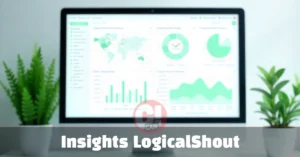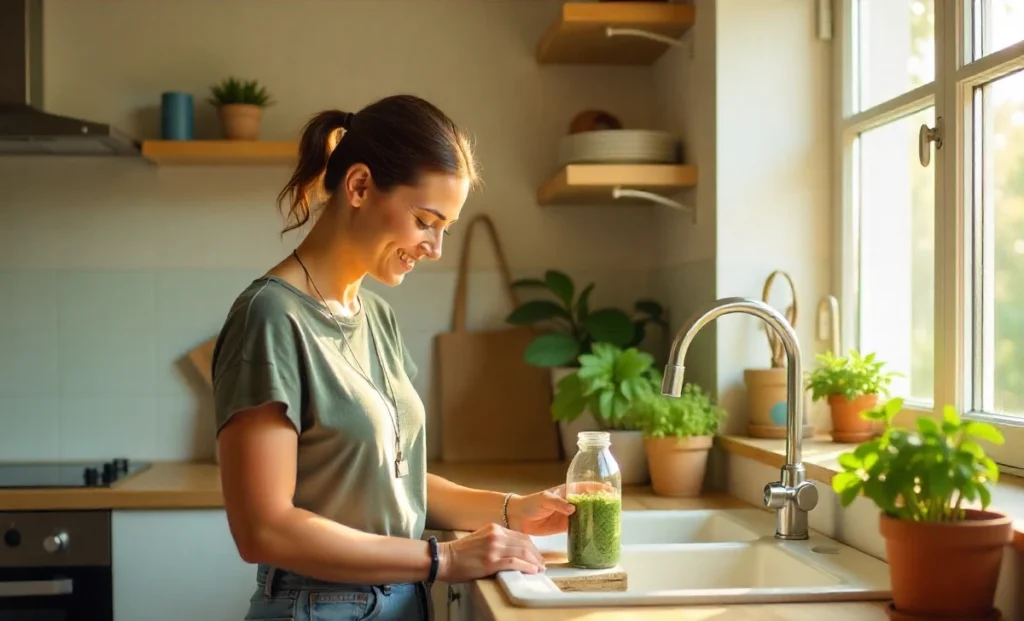I used to think sustainable living meant giving up everything I loved. Boy, was I wrong.
The truth is, what are best tips for sustainable lifestyle changes don’t require you to live like a monk or spend a fortune on fancy eco-products.
After years of trial and error, I’ve discovered that small, consistent changes create the biggest impact. Let me share what actually works.
Why Small Changes Beat Big Overhauls
I learned this lesson the hard way. Three years ago, I tried to go completely zero-waste overnight.
I bought expensive glass containers, switched to bamboo everything, and attempted to make my own toothpaste. Within two weeks, I was exhausted and back to my old habits.
The problem wasn’t my intention—it was my approach.
Real sustainable lifestyle changes happen gradually. They need to fit into your actual life, not some perfect Instagram version of it.
Think of it like learning a new language. You don’t become fluent overnight, but daily practice adds up to real progress.
Start With Your Waste Stream
I always tell people to begin by watching their trash for one week. This simple exercise opened my eyes completely.
I was throwing away so much food it actually shocked me.
Start with these easy wins:
- Use reusable water bottles and coffee cups
- Bring cloth bags to the grocery store
- Repurpose glass jars for storage
- Fix things instead of replacing them immediately
The key is picking one area and mastering it before moving on. I started with reusable bags and now it’s second nature.
Energy Conservation That Actually Saves Money
Here’s what I wish someone had told me earlier: energy conservation isn’t about freezing in winter or sweating through summer.
Smart energy use saves money while helping the planet.
I replaced my old light bulbs with LEDs and saw an immediate difference in my electric bill. The upfront cost paid for itself within three months.
Simple changes that work:
- Unplug devices when you’re not using them
- Use a programmable thermostat
- Air-dry clothes when possible
- Take shorter showers (I aim for five minutes)
My monthly utility bill dropped by 30% just from these basic changes. That extra money goes toward other sustainable upgrades.
Mindful Consumption Changes Everything
This might be the most important lesson I’ve learned about sustainable living.
Before buying anything, I now ask myself three questions: Do I need this? Will I use it regularly? Can I borrow or buy it used?
This simple practice transformed my shopping habits completely.
I stopped impulse buying and started appreciating what I already owned. My closet has fewer clothes, but I love everything in it.
The 24-hour rule works wonders too. If I want something, I wait a day before purchasing. Most of the time, I realize I don’t actually need it.
Sustainable Eating Without the Stress
I’m not telling you to become vegan overnight. That’s not realistic for most people, and it wasn’t for me either.
Instead, I started with “Meatless Mondays” and gradually added more plant-based meals.
Here’s what makes sustainable eating actually sustainable:
- Buy local produce when it’s in season
- Plan your meals to reduce food waste
- Cook larger portions and freeze leftovers
- Start a small herb garden (even windowsill herbs count)
I now eat meat maybe three times a week instead of every day. The change happened naturally as I discovered delicious vegetarian recipes.
Eco-Friendly Commuting Solutions
Transportation was my biggest carbon footprint challenge. I live in a suburb where public transit is limited.
I couldn’t take the bus to work, but I could combine trips and work from home occasionally.
Small changes in how you travel add up:
- Walk or bike for trips under two miles
- Combine errands into one trip
- Carpool when possible
- Maintain your car properly for better fuel efficiency
I started biking to nearby places and realized how much I enjoyed it. Now it’s my preferred method for short trips.
Building Sustainable Habits That Stick
The secret isn’t willpower—it’s making sustainable choices easier than unsustainable ones.
I keep reusable bags in my car and by my front door so I never forget them.
Place sustainable options where you’ll see them. Put a water filter on your counter instead of buying bottled water.
Stack new habits onto existing routines. I check my reusable bags when I grab my car keys.
Start with one change, practice it for three weeks until it becomes automatic, then add another.
Community Support Makes the Difference
I used to think sustainable living was a solo journey. Then I joined a local environmental group and everything changed.
Having people who shared my values made staying motivated so much easier.
Community involvement options:
- Join local cleanup events
- Start a neighborhood composting program
- Share resources with neighbors
- Support businesses with sustainable practices
My neighbors and I now share tools, bulk-buy organic produce, and swap home-grown vegetables. It’s created real friendships while helping the environment.
Long-Term Benefits Worth the Effort
After three years of gradual changes, the benefits go far beyond helping the planet.
My grocery bills are lower, my energy costs dropped, and I feel healthier overall.
I waste less food, buy fewer things I don’t need, and spend more time outdoors. My stress levels decreased because I’m not constantly buying stuff to feel better.
Creating a healthy lifestyle routine naturally supports sustainable living choices.
The financial savings allowed me to pay off debt and start an emergency fund. Sustainable living improved my entire life, not just my environmental impact.
Consistency Beats Perfection Every Time
Here’s the truth nobody talks about: I still make unsustainable choices sometimes.
I forgot my reusable bags last week and had to use plastic ones. I didn’t quit—I just did better the next time.
Progress isn’t linear. Some weeks you’ll nail all your sustainable habits, other weeks life gets crazy and you’ll slip up.
The goal isn’t perfection. It’s making more sustainable choices more often than you did last year.
Getting Started Without Overwhelm
Pick one area from this article that resonates with you. Maybe it’s reducing food waste or switching to LED bulbs.
Focus on that single change for the next month.
Don’t try to revolutionize your entire life at once. I tried that approach and it failed miserably.
Small, consistent actions create lasting change. One sustainable habit leads naturally to another.
After mastering your first change, choose a second area to work on. Build your sustainable lifestyle gradually and it will actually stick.
Final Thoughts
The best tips for sustainable lifestyle changes aren’t complicated or expensive. They’re simple shifts that fit into your real life and budget.
Start small, stay consistent, and remember that progress matters more than perfection.
Your sustainable journey will look different from mine, and that’s perfectly fine. The important thing is taking that first step toward a more conscious way of living.
Frequently Asked Questions
How long does it take to form sustainable habits
Most habits take 21-66 days to become automatic. I recommend focusing on one change for at least a month before adding another.
Are sustainable products always more expensive
Initially, some eco-friendly products cost more upfront, but they often save money long-term. LED bulbs, reusable items, and energy-efficient appliances pay for themselves over time.
What if I live in an area with limited sustainable options?
Focus on what you can control: reducing waste, conserving energy, and making mindful purchases. Online shopping can help you access sustainable products if local options are limited.
How do I stay motivated when progress feels slow
Track your wins, no matter how small. Join online communities or local groups for support. Remember that every sustainable choice makes a difference, even if you can’t see immediate results.
Should I replace everything with eco-friendly versions immediately?
No, use up what you have first. Replace items with sustainable alternatives as they wear out. This approach is more economical and actually more sustainable than throwing away functional items.







